Two New Technologies Every Motorcycle Rider Must Have
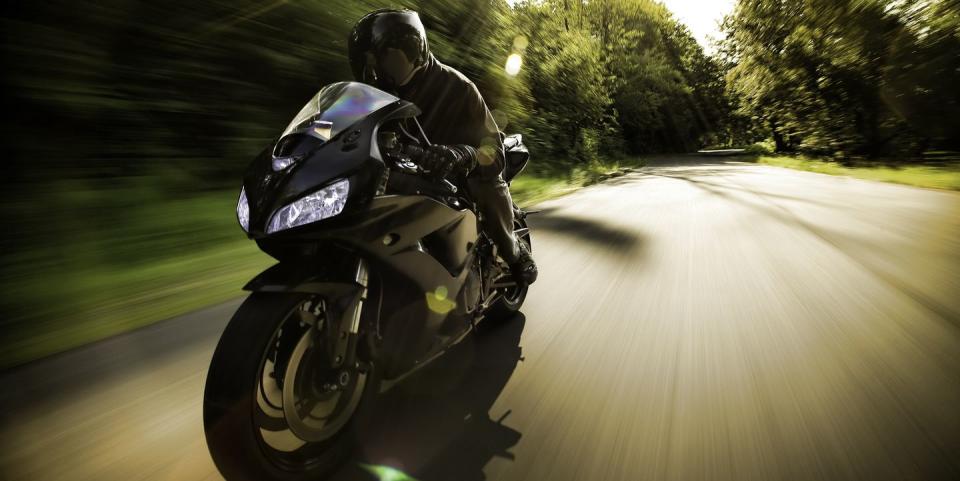
"Hearst Magazines and Yahoo may earn commission or revenue on some items through these links."
Technological advancements in motorcycle safety gear make riding today safer than it’s ever been.
Motorcycle airbags wrap around you and inflate automatically in milliseconds in case of an accident to protect your torso, collarbones, and shoulders.
MIPS helmets—Multi Directional Impact Protection System—mitigate brain injuries by absorbing the twisting motion of a crash.
In your youth—or maybe it was just my youth, which was quite a while ago—there were many people riding motorcycles without helmets. Almost no one wore proper protective riding gear, either. Some would wear leather jackets and jeans, but for many of those guys it was just a fashion statement. There are still states right here in the US of A where there are no helmet laws, let alone any requirement that you protect yourself with more than a tank top, shorts, and flip flops. (“That’s freedom, son.”)
That could be an argument for another day, or for the comments section below.
But there is new technology available right now that will help mitigate serious motorcycle crashes and lessen the chances of serious injury or death: air bags and MIPS helmets.
The air bags are just what they sound like, wearable vests or jackets that use a myriad of sensors to detect when you’re having a crash and then deploy almost instantly to turn your torso into a Michelin Man before you hit the asphalt. When inflated they are significantly harder than a back protector. They remain inflated for a few minutes after deployment in case you’re having a real tank-slapping yard sale of a crash.
The other technology goes in your helmet and is called MIPS—Multi Directional Impact Protection System. When your helmet strikes an object at an angle, it tends to twist your head around, like when Mike Tyson punches you in the jaw. Your skull swivels around but your brain just sits there going, “Waaaaaa?” before it, too, is violently twisted around. That’s usually what knocks you out and gives you a concussion. A MIPS liner is like a shim for your skull that allows your outer helmet layers to twist independently before—or instead of—your head twisting, while your skull and brain just sit there happily, thus potentially (lawyers!) mitigating (more lawyers!) injuries such as concussion or coma.
Pretty techno-cool-stuff, eh? Let’s check it out.
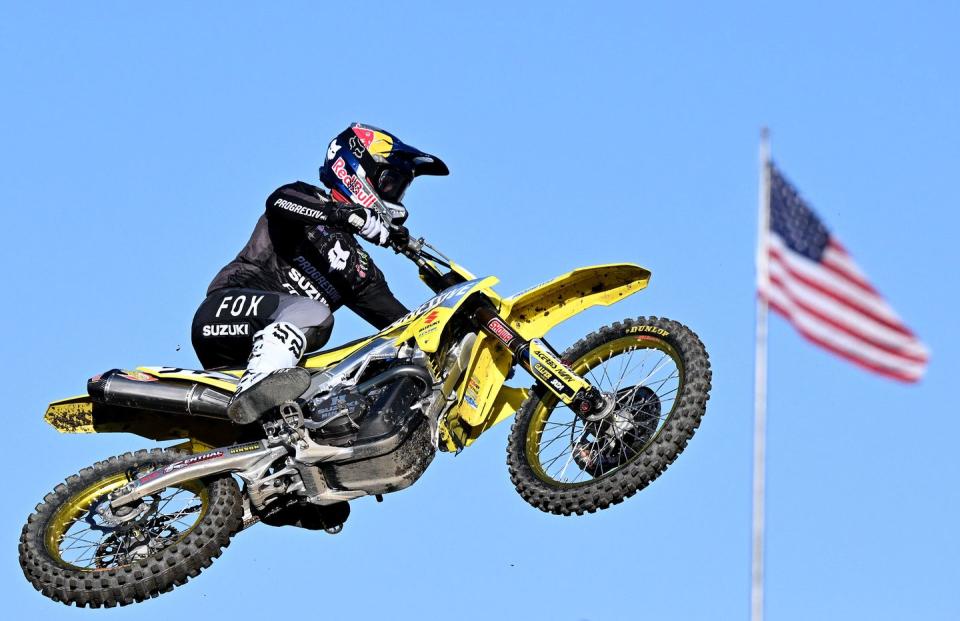
We’ll start with the air bags. The big names in this field are Alpinestars and Dianese. Both have been working on motorcycle air bags for decades. There are also airbags from Klim, Helite, and Spidi. All but the Spidi are automatically activated when the airbag’s sensors detect a crash. The Spidi unit is tethered and deploys when you separate from the bike and the tether yanks the switch.
How do they work? You plug your vest or jacket in when you’re home to charge it up before riding. Specs differ from bag to bag but in general, you could say a full charge is good for over 24 hours of riding. (It doesn’t have to be 24 straight hours, of course, you can spread it out over a week or more.) When charged, you get a flashing light on the sleeve or the lapel of the air bag. In all but the Spidi, there are accelerometers and gyroscopes in each unit. Each is constantly measuring your body position and the rate at which that position changes. After millions of miles of rider data collected over several years, an algorithm has been perfected that can take data from those sensors and use it to tell when you’re having an accident. In certain kinds of accidents, the bag deploys, filling the vest or jacket with inert gas from a pressurized container within the air bag and mitigating the number and extent of any injuries you might suffer.
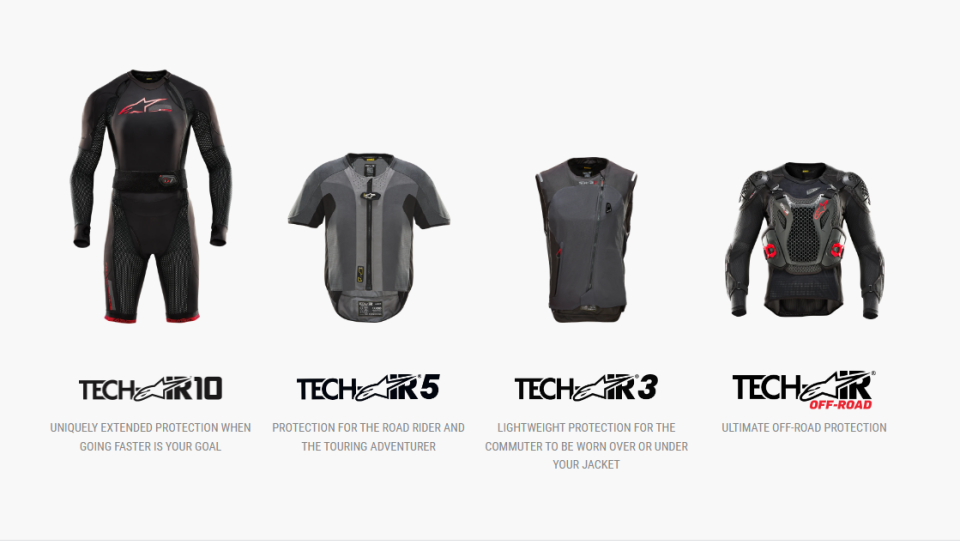
The Alpinestars bag inflates in 25 milliseconds, for instance, and remains fully inflated for five seconds, then very slowly deflates over the course of about two minutes. Alpinestars has five different air bag systems for five different kinds of riding, from track racers to daily commuters. I have recently been testing out the Alpinestars Tech-Air 3 airbag, made with daily commuters in mind. You can wear it under or over your regular jacket. It’s comfortable and easy to get on and off. That one is priced at $599.95. Alpinestars prices go all the way up to the Racing Absolute 1-Piece Leather Suit Tech-Air Compatible for $2599.95.
Dainese is another leading maker of motorcycle air bags. I’ve been riding with a Dainese D-Air jacket since 2019. Luckily, it hasn’t had to deploy in that time. It feels a little heavy when you’re carrying it around, but once it’s on you it feels just fine. Dainese D-Air jackets range in price from $779 for the vest system to $2799 for the full Misano 2 D-Air Performance one-piece suit of the kind you’d wear for a track day weekend.
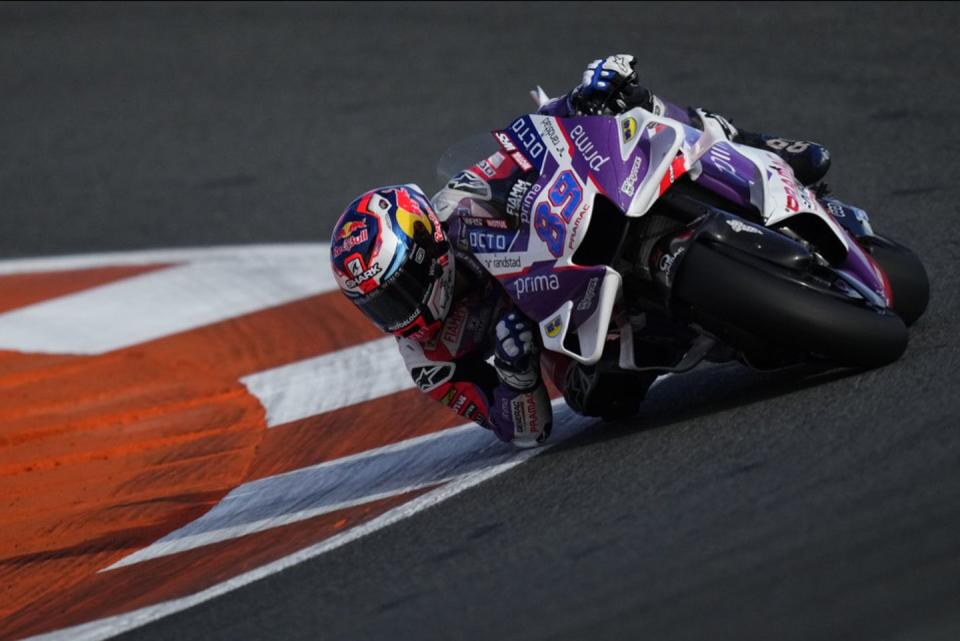
“All the safety of the Dainese airbag system used in MotoGP and developed in more than 25 years of research on the road and track is now encapsulated in a convenient vest that fits any road situation,” Dainese says of its Smart Jacket vest. “The Smart Jacket monitors what’s happening around the motorcycle rider 1000 times a second. It always deploys the Shield when necessary, and only then, to provide the rider with maximum protection. We’ve never had this level of freedom before, and we’ll never be without it again.”
The above two manufacturers are the only air bag brands I’ve tried, and I liked them both.
In general, motorcycle airbags protect your torso, collarbones, and, on some of them, your shoulders. The units made for track riding cover even more. Check out all the models offered to decide what’s best for the riding you do. But do get one.
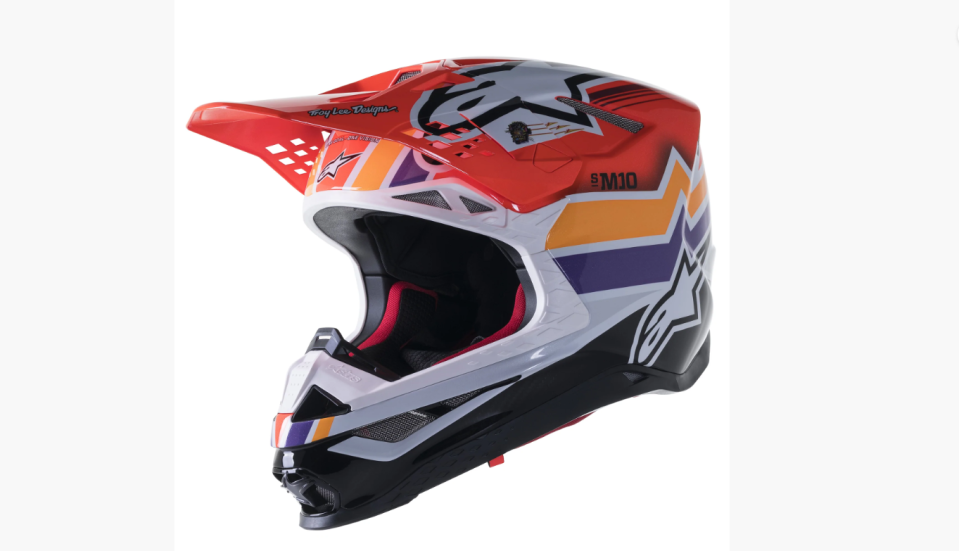
The next big advance in motorcycle safety is the MIPS helmet.
Since they were first invented, helmets were designed to protect your skull from a straight-on impact. Think banging your head against the wall like Woody Woodpecker. This worked well for about the last 100 years to prevent skull fractures. The problem is, most impacts aren’t straight-on ker-smacks. Most impacts occur at an angle, and that is what twists your noggin around.
“The most important thing is to wear a helmet in general, because if you don’t wear a helmet, and then you normally hit the ground, the ground is normally hard, you have a very high risk of having a skull fracture,” explained Max Strandwitz, CEO of MIPS, during a recent seminar on the subject in California. “If you look at hospital statistics in the last 20 years, you see that when people wear helmets, it’s very seldom that you actually get a skull fracture. It has nothing to do with MIPS, it’s just that normally certified helmets—if you don’t talk about ultra-high-speed accidents—is normally protecting you quite well against the skull fracture.”
But that’s not all there is to impacts.
“When you have rotational motion coming into play, you need to have a different type of technology to address that. Because that is not about absorbing force, which you normally do in a linear impact, it’s about redirecting force, you want to get the force away from the head. That’s why we use the slip plane technology to redirect the energy that otherwise would be absorbed by the head. And we have not found any more effective way to do it.”
MIPS technology is very basic: It’s a thin plastic layer within the helmet that acts as a low-friction layer that gives way in an impact to allow the outside of your helmet, the part that is striking the ground, to twist independently of the inner part of the helmet, the part closest to your head.
Even if that twist is only a very small amount, MIPS can potentially prevent or lessen a brain injury—and remember, you need your brain.
The problem is not the technology, it’s getting the word out. Hence, the seminar I attended. Also present at the MIPS seminar were representatives of helmet makers Thor, Fox, Alpinestars, and Troy Lee, the latter represented by Troy Lee himself.
“My job is to make sure these guys can race every weekend,” said Lee, gesturing to three of his dirt bike riders. “If there’s any way I can make a helmet safer, I’m going to do it.”
All the riders on Lee’s GASGAS motocross teams competing in 450 SX, SX West, and SX East 250 series, as well as in the Lucas oil Outdoor Motocross Championships, wear MIPS-equipped helmets.
Indeed, 25 percent of off-road helmets sold in the United States have MIPS technology, but only one percent of street helmets have it. Right now, the US DOT does not require MIPS in a helmet. It is available in helmets from Alpinestars (the SM10, for instance), Thor, Bell, Fox, and of course Troy Lee Designs. Other makes also offer it. Be sure and ask, nay, demand a MIPS brain bucket.
Wearing one, you’d never know there was a MIPS layer inside. I tried on a Thor dirt bike helmet at the seminar and went for a ride on a Cake electric dirt bike. It felt perfectly fine. Sure, you have to pay more for MIPS, as much as 36 percent more, but what’s the cost of cognitive thinking for the rest of your life? Noodle on that for a while. While you can.

 Yahoo Autos
Yahoo Autos 